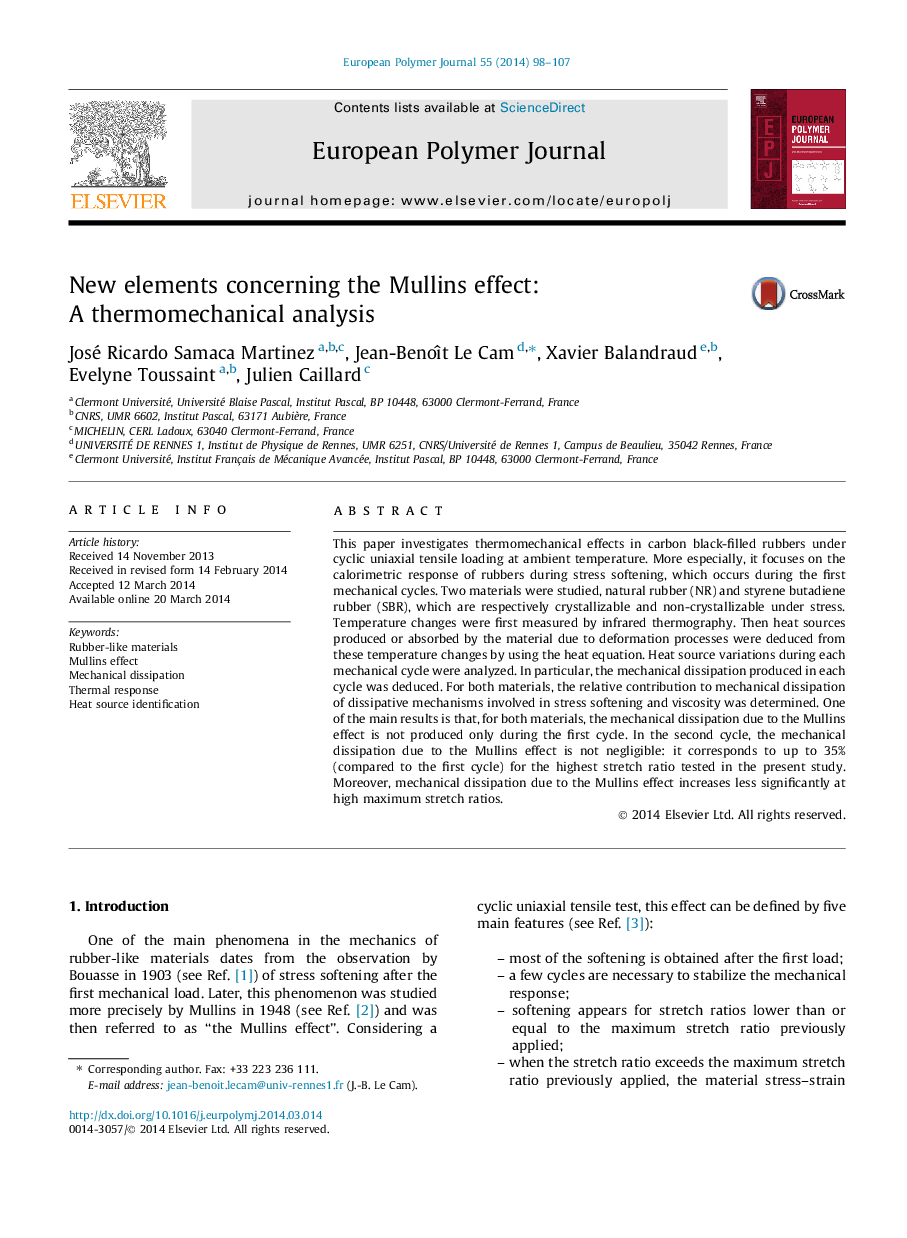| کد مقاله | کد نشریه | سال انتشار | مقاله انگلیسی | نسخه تمام متن |
|---|---|---|---|---|
| 1399529 | 1501380 | 2014 | 10 صفحه PDF | دانلود رایگان |
• Filled styrene butadiene and natural rubbers are tested under cyclic uniaxial loading.
• Temperature measurements are performed using infrared thermography.
• Calorimetric response of both materials is characterized during stress softening.
• Mechanical dissipation due to Mullins effect is determined.
• Results provide the first database for thermomechanical modeling of Mullins effect.
This paper investigates thermomechanical effects in carbon black-filled rubbers under cyclic uniaxial tensile loading at ambient temperature. More especially, it focuses on the calorimetric response of rubbers during stress softening, which occurs during the first mechanical cycles. Two materials were studied, natural rubber (NR) and styrene butadiene rubber (SBR), which are respectively crystallizable and non-crystallizable under stress. Temperature changes were first measured by infrared thermography. Then heat sources produced or absorbed by the material due to deformation processes were deduced from these temperature changes by using the heat equation. Heat source variations during each mechanical cycle were analyzed. In particular, the mechanical dissipation produced in each cycle was deduced. For both materials, the relative contribution to mechanical dissipation of dissipative mechanisms involved in stress softening and viscosity was determined. One of the main results is that, for both materials, the mechanical dissipation due to the Mullins effect is not produced only during the first cycle. In the second cycle, the mechanical dissipation due to the Mullins effect is not negligible: it corresponds to up to 35% (compared to the first cycle) for the highest stretch ratio tested in the present study. Moreover, mechanical dissipation due to the Mullins effect increases less significantly at high maximum stretch ratios.
Graphical AbstractFigure optionsDownload as PowerPoint slide
Journal: European Polymer Journal - Volume 55, June 2014, Pages 98–107
